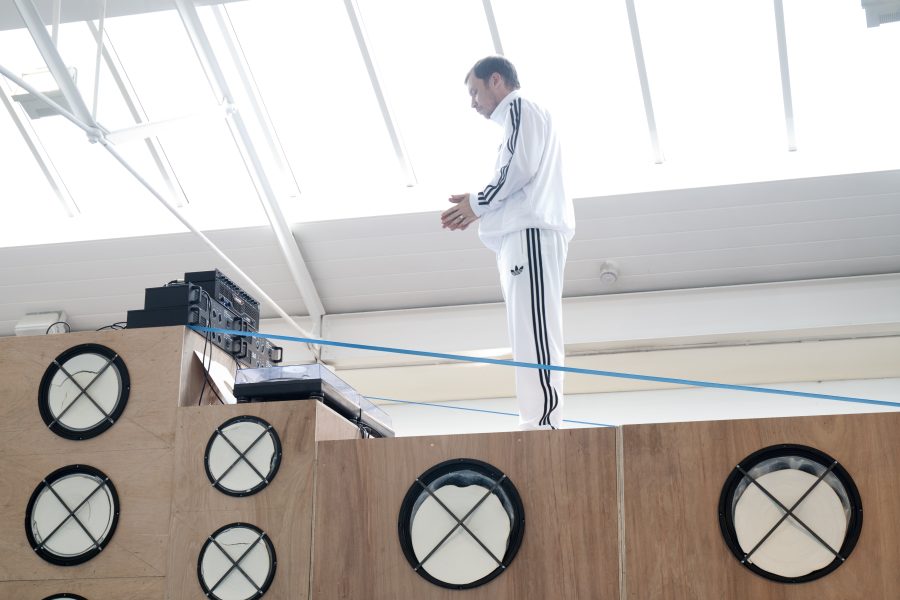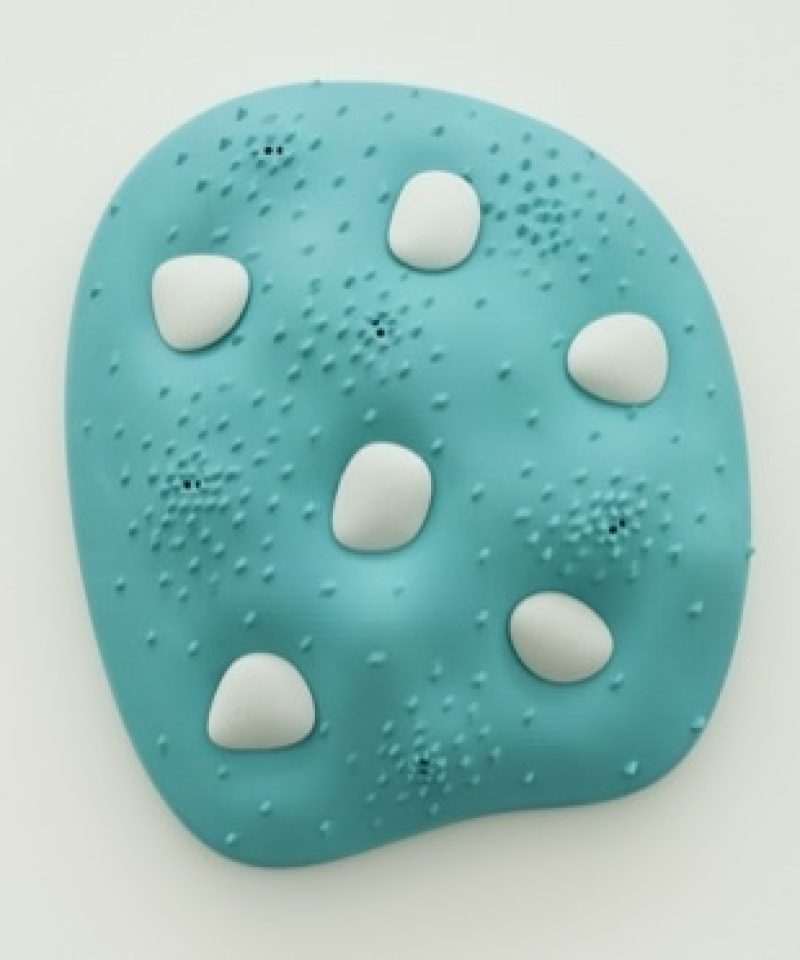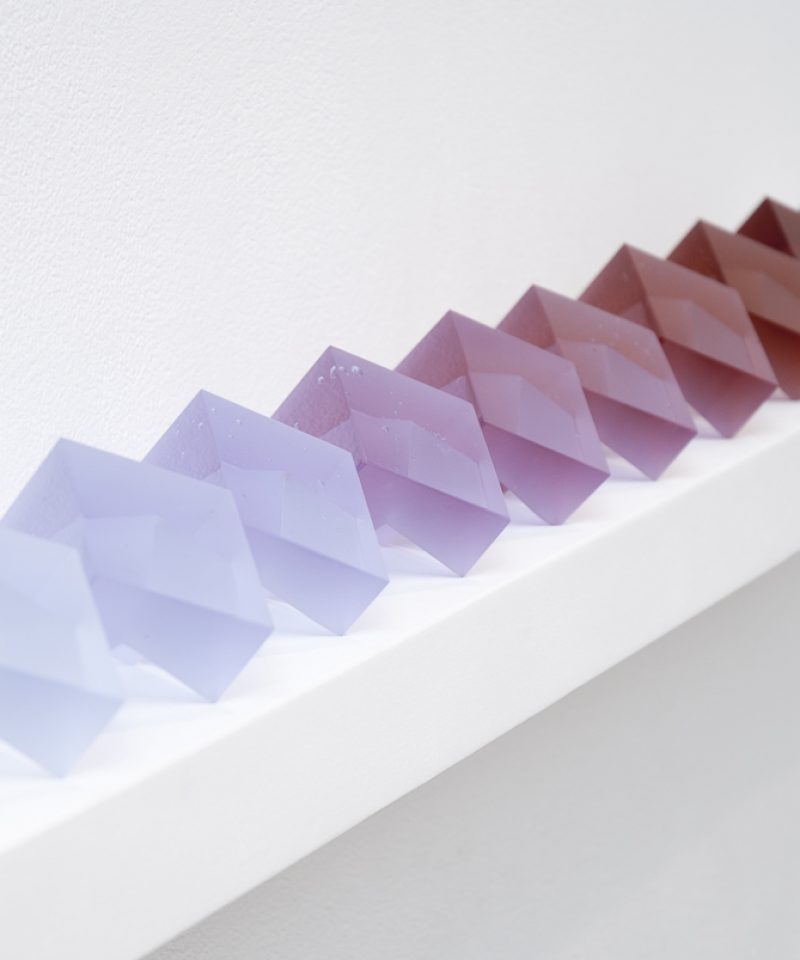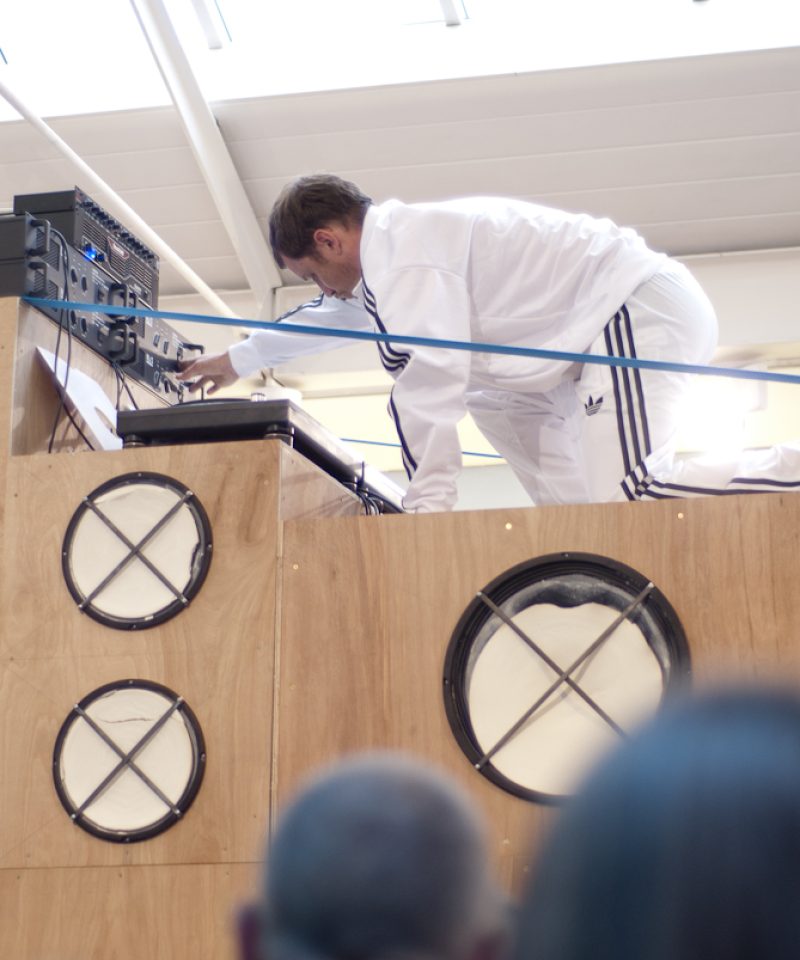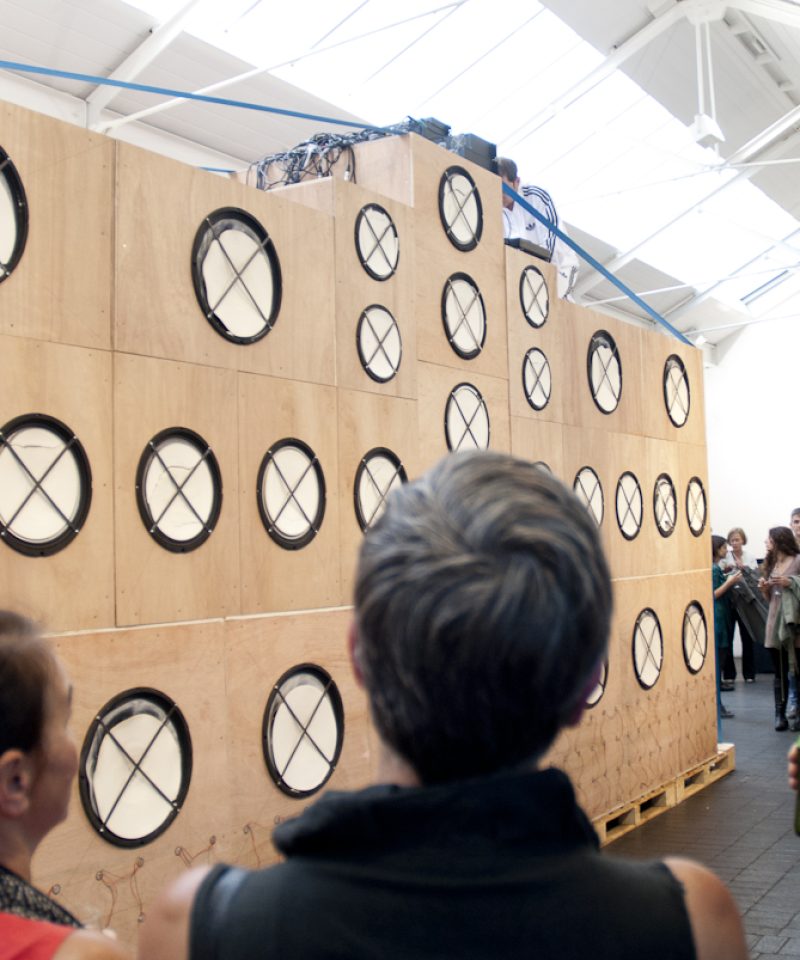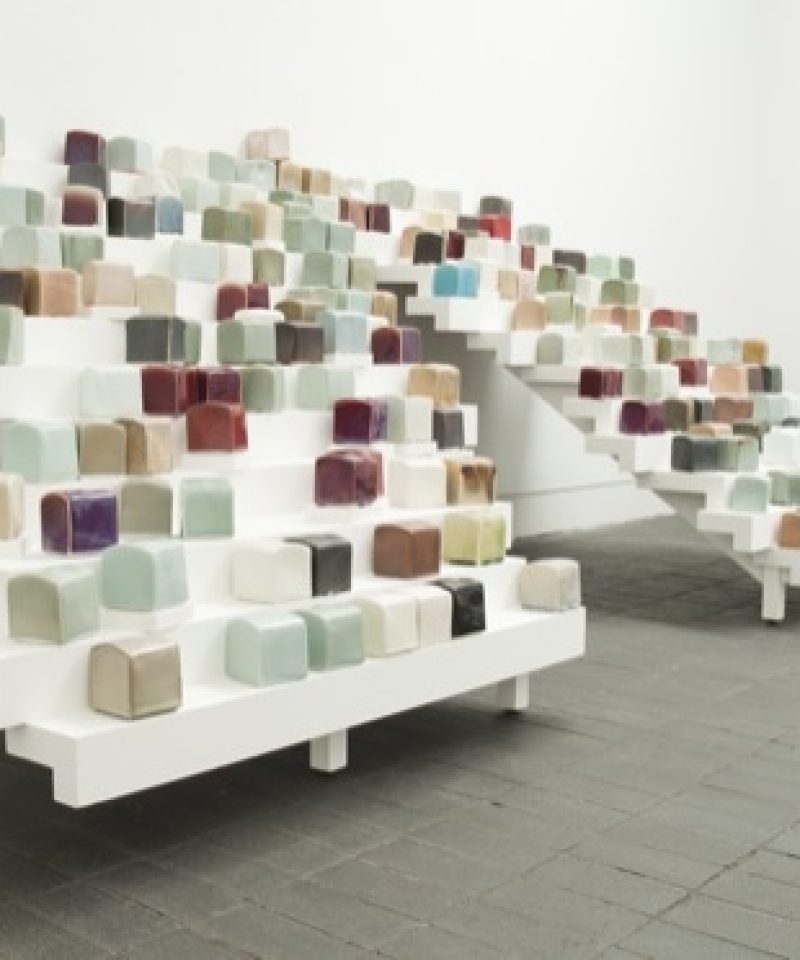It’s not everyday that an artist encourages you to pick up and play with their work, but that’s exactly what Farah Bandookwala invites us to do at the Jerwood Makers Open exhibition. With a background in jewellery, Bandookwala is keen to stress the importance of the viewer’s involvement with the work. For her, jewellery is only activated when it is worn by an individual and the same is true of her new sculptural pieces, for it is only when we physically engage with her works that she considers them complete. It’s a stance that reflects a trajectory within contemporary art which, since the 1960s, has underscored the physical involvement of the viewer as an essential part of the work itself — from the work of Minimalists such as Donald Judd or Carl Andre to the so called ‘relational aesthetics’ of the late 90s that continue to inform much contemporary art practice today. Yet despite having taken the leap from creating small-scale items of jewellery to larger sculptural works, Bandookwala does not consider herself a sculptor or even an artist per se. Instead she prefers to call herself a designer maker, conscious that her work hovers on the boundary between several different disciplines.
Bandookwala’s new works are like exotic creatures or perhaps the type of squirming organisms one might expect to see under a microscope. Sitting on a plinth, Quiver looks like some kind of ancient sea creature that’s been washed ashore. This is the work that visitors can handle, and as they do it starts to vibrate. It’s a strange and slightly unsettling experience, not only because touching an artist’s work simply feels wrong but also because you’re not sure what, if anything, it might do next. Nearby, down on the floor is Bristle, a curious little piece that reacts to your presence; as you approach, a spikey grey form shoots up from inside another purple, coral-like structure. It is perhaps the defence mechanism of a creature who feels threatened or it may even be some sort of hostile or agressive behaviour. Either way it’s rather unnerving. Flicker, on the other hand, is a far more friendlier piece. What can only be described as a blobby biomorphic form sits hanging on the wall. A series of white blobs placed across its blue surface respond to your presence by lighting up — waving your hand across its surface triggers an unpredictable pattern of illumination. As with all of her new sculptures there is an element of exploration and discovery here, and viewers must interact with the work to learn how each piece responds.
Despite initially appearing highly organic, closer inspection reveals a curious, almost pixellated quality to Bandookwala’s sculptures. These digital artefacts are a result of the cutting-edge techniques involved in their making. Computer-aided design, rapid prototyping and haptic interfaces are employed to build up complex textures that are intended to introduce an element of ‘tactile intrigue’ to the work (a more detailed discussion of Bandookwala’s production methods can be read in a forthcoming interview with the artist). These radical new processes are at once baffling and hugely exciting and it feels as if Bandookwala is only just scratching the surface of what might be possible. Looking at the older selection of jewellery which has been included in the exhibition, it’s amazing just how ambitious Bandookwala has been in creating these new works. This scale of ambition is testament to the liberation that arises from opportunities such as the Jerwood Makers Open, allowing artists the time and resources to explore ways of working that were hitherto completely out of reach.

